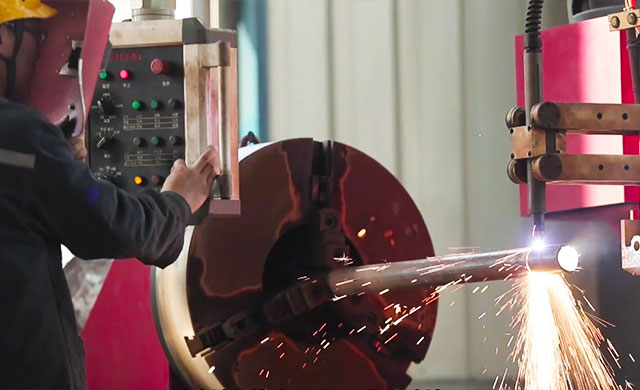
Dec . 11, 2024 10:13
Back to list
Natural Gas Valve System for Efficient Energy Management and Safety Controls
The Importance of Natural Gas Valves in Modern Energy Systems
Natural gas is one of the most widely used sources of energy in the world today. Its versatility makes it an essential part of the energy infrastructure, providing heating, electricity generation, and fuel for vehicles. Amid the various components that make up the natural gas supply chain, valves play a critical role in ensuring safety, efficiency, and reliability. This article delves into the significance of natural gas valves, their types, functions, and the safety mechanisms that they incorporate.
Understanding Natural Gas Valves
Valves are mechanical devices that regulate the flow of gases, liquids, or slurries by opening, closing, or partially obstructing passageways. In the context of natural gas, these devices help control the flow of gas from extraction points, through pipelines, to end-users such as homes and industries. The proper function of these valves is crucial not only for operational efficiency but also for safety, given the potentially hazardous nature of natural gas.
Types of Valves Used in Natural Gas Systems
There are several types of valves utilized in natural gas systems, each serving specific functions
1. Gate Valves Often used for on/off control, gate valves are ideal for applications where minimal pressure drop and full flow are required. They are typically installed in pipelines that do not require frequent operation. 2. Ball Valves Known for their reliability and durability, ball valves offer the ability to provide a tight seal and are excellent for quick shutoff applications. Their spherical disc allows for smooth flow and minimal pressure drop, making them a popular choice in natural gas systems. 3. Globe Valves These valves are commonly used for throttling flow and are recognized for their ability to control and regulate the flow rate accurately.
.
5. Pressure Relief Valves These safety devices prevent excessive pressure buildup in the system. They open automatically to release gas when pressure exceeds a predetermined level, ensuring the safety of the entire gas infrastructure.
صمام الغاز الطبيعي

The Role of Valves in Safety Mechanisms
Natural gas, being highly flammable, poses various safety risks when mishandled. Hence, the integration of advanced safety mechanisms in gas valves is paramount. Some safety features include
- Emergency Shut-off Valves These valves are designed to quickly halt the flow of gas in emergencies, such as leaks or system failures. They can be activated manually or automatically, providing an essential layer of safety.
- Actuated Valves Automated systems using actuators can monitor gas pressure and flow, making real-time adjustments as needed. This ensures a consistent safe operation while reducing the risk of human error.
- Flow Restrictors These devices limit the maximum flowrate of gas to prevent sudden surges that could lead to dangerous situations.
Conclusion
In light of the increasing reliance on natural gas as a primary energy source, the role of valves in gas systems cannot be overstated. They are vital components that contribute not only to the operational efficiency of gas delivery systems but also to the safety of consumers and the environment. Manufacturers continue to innovate and improve valve technology, incorporating smarter designs and safety features to address the challenges posed by the growing demand for natural gas.
Whether in large-scale industrial applications or residential heating systems, the effective management of gas flow through reliable valve systems is essential for the sustainable use of natural gas. As we move towards a cleaner energy future, understanding and optimizing the functionality of natural gas valves will remain a critical aspect of energy infrastructure development.
Latest news
-
Safety Valve Spring-Loaded Design Overpressure ProtectionNewsJul.25,2025
-
Precision Voltage Regulator AC5 Accuracy Grade PerformanceNewsJul.25,2025
-
Natural Gas Pressure Regulating Skid Industrial Pipeline ApplicationsNewsJul.25,2025
-
Natural Gas Filter Stainless Steel Mesh Element DesignNewsJul.25,2025
-
Gas Pressure Regulator Valve Direct-Acting Spring-Loaded DesignNewsJul.25,2025
-
Decompression Equipment Multi-Stage Heat Exchange System DesignNewsJul.25,2025

